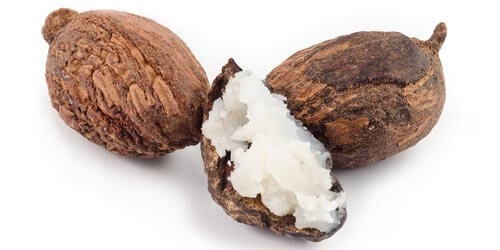There are so many toxic ingredients in skincare products that it is difficult to avoid them. The thing is though, there is no need to use them if you know what you’re doing.
I don’t use any toxic ingredients but they’re so common it’s necessary to be aware of them. That’s why I compiled a list of the top ten most toxic skincare ingredients for you to learn about.
Parabens
They’re a group of preservatives made from petrochemicals. On the label look for methylparaben, butylparaben, propylparaben, ethylparaben, isobutylparaben. They’re in moisturisers, makeup, hair products, food and more. EU has banned 5 types of parabens for use in cosmetics.
Why to avoid: They interfere with hormonal levels and reproductive function. They’re also linked to breast cancer and developmental disorders in babies.
Synthetic Fragrances
This is an umbrella term for up to 100 chemicals that make up a scent but over 3000 chemicals are used as fragrances. These chemicals are often petrochemicals and phthalates. On the label look for fragrance, parfum and eau de toilette. They’re in perfumes, deodorants, creams, hair products and more. EU restricts the use of many fragrances for use in cosmetics.
Why to avoid: They’re highly allergenic and are among the top five allergens in the world. Fragrances can cause headaches, migraines and dermatitis. They’re also linked to hormone disruption, reproductive harm and cancer.
Mineral Oil and Petrolatum
This is a by-product of the petroleum industry used to moisturise, soften and shine. On the label look for paraffin/white mineral oil, petroleum jelly, liquid paraffin and liquid/white petroleum. They’re in moisturisers, ointments, lip balms, baby oils/balms and hair products. EU classifies petrolatum as a carcinogen and restricts its use in cosmetics.
Why to avoid: They’re often contaminated with cancer-causing impurites. They’re also linked to skin irritation and allergies and may clog skin pores and cause acne.
Dibutyl Phthalate or DBP
This is a chemical compound used as plasticizer and to make fragrance last longer. On the label it’s as DEP, DBP, DEHP, BBZP, DMP and MEP. It’s in perfumes, moisturisers, nail polish, hair products. EU has banned phthalates from toys and some of them in cosmetics. Canada has banned DEHP in cosmetics.
Why to avoid: It can easily leech out of products and is absorbed through skin, lungs, intestines. It can cause reproductive and developmental anomalies. It’s linked to low sperm counts, miscarriage, infertility and obesity. It may also disrupt hormones and cause allergies, asthma, eczema, cancer, thyroid dysfunction and ADHD.
Synthetic Colours
These are chemicals derived from petroleum or coal tar. A single dye is often composed of many chemicals. On the label look for the letters FD&C or D&C, for example FD&C Blue no.2 or just the colour and no. such as Yellow 5. You can identify Coal tar-derived colours by a five-digit colour Index (C.I.) number. Colours are in moisturisers, skin toners, facial cleansers, nail polish, hair products, soaps and toothpaste. EU has banned many colours derived from coal tar in hair dyes.
Why to avoid: They’re linked to skin irritations and various cancers. They can also contain heavy metals toxic to the brain.
Siloxanes and Silanes
These are silicon-based ingredients used as emulsifiers to soften and smoothen. On the label look for „siloxane,” „ethicone” and „silane” as suffixes. Cyclotetrasiloxane (D4), cyclopentasiloxane (D5), cyclohexasiloxane (D6), cyclomethicone, dimethicone and polydimethylsiloxane. They’re in moisturisers, deodorants, hair products and sexual health products.
Why to avoid: They can interfere with hormones, may cause infertility and are possible reproductive toxins. They’re linked to cancer and can cause harm to the immune system. They also have a potential persistent-bioaccumalative-toxic (PBT) effect on the environment.
Formaldehydes
Why to avoid: Known to be human carcinogens, they can trigger allergic skin reaction and irritate eyes, nose and throat.
BHA and BHT
These closely-related synthetic antioxidants are preservatives. On the label look for BHA (butylated hydroxyanisole) and BHT (butylated hydroxytoluene). They’re in moisturisers, deodorants, makeup, perfumes, lip and hair products and food. EU has banned BHA as a fragrance ingredient in cosmetics.
Why to avoid: They may trigger allergic skin reaction, can cause cancer and interfere with hormones. They’re linked to liver, thyroid, blood, lung and kidney dysfunction. They also have potential persistent-bioaccumalative-toxic (PBT) effects on the environment.
DEA, MEA and TEA
Ethanolamines (DEA, MEA, TEA) are ammonia compounds used as emulsifying and foaming agents. On the label look for DEA, MEA, TEA, monoethanolamine, diethanolamine and triethanolamine, cocamide DEA, cocamide MEA, lauramide DEA and stearamide MEA. They’re in moisturisers, sunscreens, bath and hair products, make up and fragrances. EU classifies DEA as harmful and restricts their use in cosmetics.
Why to avoid: They can react with other chemicals to form carcinogenic nitrosamines. They may interfere with hormones, cause skin and eye irritations and asthma. They’re also linked to liver cancers and precancerous changes in skin and thyroid. They have potential persistent-bioaccumalative-toxic (PBT) effects on the environment.
Retinol Derivatives (Vitamin A)
Retinol and its derivatives are synthetic versions of vitamin A. Retinol can slow skin aging and clear up acne. On the label look for retinol, vitamin A, retinyl acetate, retinyl palmiate, retinyl linoleate and all-trans retinoic acid. It’s in anti-aging creams, anti-acne creams, makeup, sunscreens and lip products. EU has banned Tretinoin (all-trans retinoic acid) for use in cosmetics.
Why to avoid: It can potentially cause cancer with exposure to sunlight. It can also cause possible developmental and reproductive toxicity.
Other Toxic Ingredients to Avoid
We’ll also never use:
- SLS (sodium lauryl sulfate – foaming agent)
- SLES (sodium laureth sulfate – foaming agent)
- Triclosan (antimicrobal)
- PABA (UVB filter)
- Aluminum (odor control)
- MI/MIT/MCI/BIT (isothiazolinone perservatives)
- Plastic microbeads (exfoliant and bulking agent)
- Hydroquinone (skin-lightening agent)
- Animal ingredients except organic beeswax
About the Author
Anna Rósa is a medical herbalist and author of the bestselling book Icelandic Herbs and Their Medicinal Uses. She’s the CEO and founder of Anna Rósa Skincare and a member of the National Institute of Medical Herbalists in UK. It’s the oldest herbalist institute in the world, founded in 1894.






























Leave A Comment